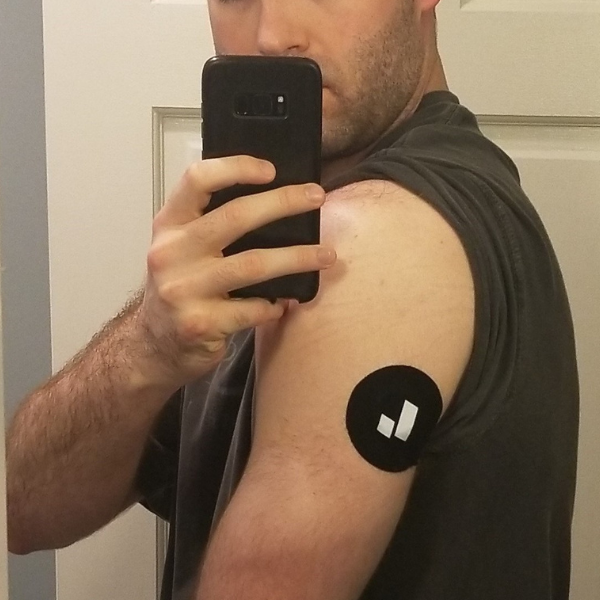Continuous glucose monitors (CGMs) fundamentally changed diabetes care more than anything since the finger stick method replaced urinalysis decades before. The technology, consisting of a thin filament inserted just under the skin, allows real-time monitoring of blood glucose levels. The device significantly reduces the disease burden on diabetes patients, allowing them to forgo the ten or so daily finger prick tests.
Since their introduction in the early 2000s, CGMs have migrated beyond Type 1 diabetes patients into use for people with Type 2 and people without diagnosed diabetes, who use it to improve their metabolic health and stave off disease. Levels has had more than 50,000 members use a CGM since we launched in 2019, for example.
The devices, which require a prescription in the U.S., are now the standard of care for patients with diabetes and are increasingly prescribed for those with prediabetes or other metabolic dysfunction, but coverage via public and private health insurers remains inconsistent. Even for people with Type 1 diabetes, who need glucose levels to dose their insulin, Medicaid coverage varies widely by state, with at least five not publishing any coverage. (Medicare now covers most people with Type 1 nationwide but still has rules about who qualifies.) Private insurance is similar: several states have no mandate to cover diabetes treatment devices. Coverage for Type 2 diabetes and non-diagnosed people is even more spotty.
Are you wondering whether you qualify for a CGM and if your insurance will cover it? Read on to understand the basics of insurance coverage and continuous glucose monitoring.
What is a CGM?
A continuous glucose monitor is a small wearable device—about the size of a stack of three coins) that sticks to your arm or abdomen, with a very thin filament inserted under the skin. The CGM takes glucose readings every few minutes and transmits that data to your smartphone (or a standalone device) so you can view it on a graph. Users wear each device for up to 14 days. Unlike the finger prick method, CGMs don’t measure blood glucose levels. Instead, they capture glucose levels in the interstitial fluid between the skin cells. Glucose levels diffuse into the interstitial fluid from the blood, but the process takes time, and the timing of the reading from the GCM might have a slight delay of up to 10-15 minutes.
While they are slightly less accurate than finger prick methods of capturing glucose levels, they are better at showing a complete glycemic curve and trends in glucose levels over 24 hours in response to nutrition or activity since they run continuously. Users and their physicians can track the readings to understand how medicines, foods, and lifestyle choices affect metabolism. People with diabetes often connect the CGM directly to an insulin pump to deliver insulin when blood sugar gets too high.
The primary CGM makers in the U.S. are Abbott, Medtronic, and Dexcom.
Who uses CGM?
One study found that, among people with Type 1 Diabetes, only 48 percent use the devices. Although continuous glucose monitors are currently considered the standard of care for the clinical management of diabetes, their adoption still lags. Researchers have found that device obtrusiveness, discomfort, cost, and lack of insurance hinder broader adoption in this patient cohort.
For people with Type 2 Diabetes, the utilization rate may be even lower, hovering around 13 percent, according to one study in 2023. Although several recent studies show a clear benefit for these patients in lowering hemoglobin A1c, improving quality of life, and maintaining longer time in range, the uptake of these devices still lags. Researchers speculate the reason for this is that Type 1 Diabetes patients typically receive their care from an endocrinologist, and they are more likely to prescribe continuous glucose monitors than primary care doctors, who treat patients with Type 2 Diabetes.
There are also different trends in usage based on age, sex, race, health insurance, and even geography. Younger people are far more likely to use continuous glucose monitors than their older counterparts. A study from the American Diabetes Association published in 2022 showed that people with diabetes aged 18 or younger who are insulin-dependent were significantly more likely to get a CGM than people between the ages of 45 and 64. Women are more likely to use CGMs than men, and usage is most prevalent in the North Central United States, followed by the Northeast, Southern, and Western US. Additionally, patients with private health insurance were more likely to use CGM than those on public insurance like Medicaid or Medicare.
There are also apparent differences in adoption in various racial and ethnic groups. In a study of young adults with Type 1 diabetes between the ages of 18 and 28, continuous glucose monitor use was lowest in black patients, followed by Hispanic and then white. The researchers found that neither socioeconomic status nor health insurance could account for the disparities. The American Diabetes Association has pointed to the lack of access to health insurance as one barrier to adoption. It has also found that black Americans are the least likely to use continuous glucose monitors regardless of age or their health insurance coverage, and the disparity is most pronounced among patients with Medicaid.
There are not reliable statistics yet on the use of CGM in populations without diabetes, but among Levels members, we see people using it for health optimization, nutritional guidance, improving metabolic health to help manage other conditions such as PCOS or prediabetes, and taking control of their markers to help stave off chronic conditions.
How do you get a CGM?
In the U.S., you need a doctor’s prescription to access the devices, but in Canada and several European countries, they are available over the counter. (For insurance coverage, a prescription is still sometimes needed.)
If you don’t have a diagnosed metabolic condition and want a CGM to improve your metabolic health, you can ask your primary care physician for a prescription and check with your insurer to see if they will cover it. The answer to either may be no—not all doctors will prescribe CGMs purely for health monitoring.
You can also use a company like Levels. One way our members can get a CGM is by opting into our large-scale study on glucose dynamics in general populations (and meeting the study criteria). Another path involves filling out a medical consult form, which an independent telehealth physician reviews to see if you qualify for a prescription. If so, our pharmacy partner fulfills the CGM prescription and sends it directly to your home. You must renew the prescriptions annually.
Does insurance cover CGMs?
Unfortunately, there’s no straightforward answer to that question. In the U.S., rules about what must be covered by private insurers and Medicaid vary by state. In addition, deductibles, approved coverage amounts, and rules about who can and can’t be covered vary by insurer and state.
Medicare:
In recent years, Medicare has expanded its coverage to make CGMs available to more patients. Before 2021, Medicare required patients to do at least four daily fingersticks and at least three insulin injections. The requirement was cumbersome and posed a significant cost barrier as the Center for Medicare Services only provided three fingersticks, forcing patients to pay out of pocket for the extras. Critics admonished these policies for being harmful, costly, and unjustified. Medicare revised the policies in July of 2021, permanently eliminating the fingersticks. The diabetes community touted the move as an essential step forward. Then, in April of 2023, The Centers for Medicare and Medicaid Services announced they would further broaden their coverage, including non-insulin-using people with a history of problematic hypoglycemia. This latter group can include people with Type 2 diabetes.
Medicaid:
While Medicare benefits remain the same throughout the country, Medicaid, which covers low-income adults and children, varies from state to state and is subject to minimum federal standards. As of May 2023, 45 states and the District of Columbia have some level of coverage for continuous glucose monitors. However, there is no consistent policy governing who qualifies and the level of coverage. States with expanded Medicaid services, which cover people whose income level falls below 133 percent of the federal poverty level, are more likely to provide coverage. You can check to see if you qualify for Medicare on this website. You can see the coverage status per state in this fact sheet published by The Center for Health Care Strategies here. [Note to editor: the possible image below)
Image source: https://www.chcs.org/media/CGM-Access-for-Medicaid-Beneficiaries-Living-with-Diabetes-State-By-State-Coverage.pdf
The type of Medicaid coverage available in each state will determine the cost coverage, where patients can get a CGM (pharmacy vs. a third-party medical equipment vendor), and whether they need prior authorization, which mandates physicians obtain approval from the state agency before writing a script.
Private Insurance:
Much like Medicaid, private health insurance policies vary widely in the amount of coverage and the type of patients who qualify for the devices. Some companies have broad guidelines requiring a diagnosis of Type 1, Type 2, or Gestational Diabetes. But others have more stringent criteria, like a Type I diagnosis with recurrent, unexplained, and severe hypoglycemia with blood glucose levels that dip below 50 mg/dL. Other companies will cover CGM even for people without a diagnosed condition as long as a doctor prescribes it as necessary.
How much do CGMs cost?
As with many medical devices, there is no fixed retail cost for CGMs. Prices vary depending on the model, insurance coverage, and how you obtain one: through a retail pharmacy, membership shopping club, or a third-party medical equipment company.
As a point of reference, Levels charges $199 for a month’s supply of CGM (two or three sensors, depending on the model), similar to prices at retail pharmacies. However, rebates and discounts are common. The makers of the Dexcom system offer a cost-savings program that can save as much as $200 off the retail price.
Continuous glucose monitors are classified as IRS-qualified medical expenses and are therefore covered by Health Savings Accounts. (CGMs acquired through Levels, which is considered a general health and wellness provider, are not typically HSA eligible.)
Conclusion
CGMs are a vital tool for people managing metabolic conditions, and while access and coverage is improving, it is still not broad enough. As the devices become more common across a wider population, and the evidence of their effectiveness becomes more clear, hopefully insurance coverage will become universal.
 Interested in trying a CGM yourself?
Interested in trying a CGM yourself?
Levels members get access to the most advanced CGMs and personalized guidance to build healthy, sustainable habits. Click here to learn more about Levels.









